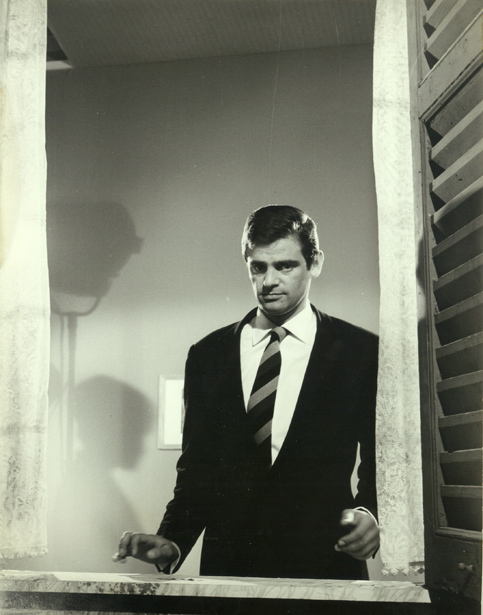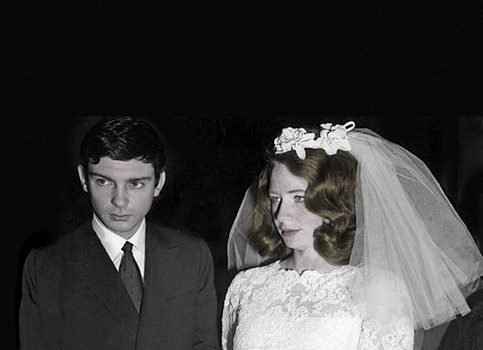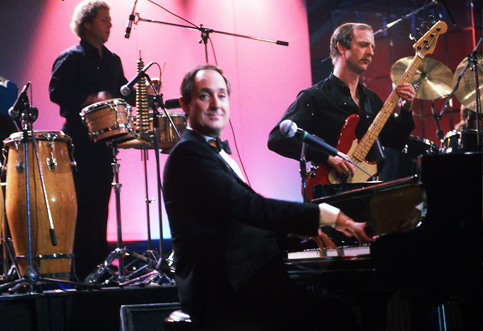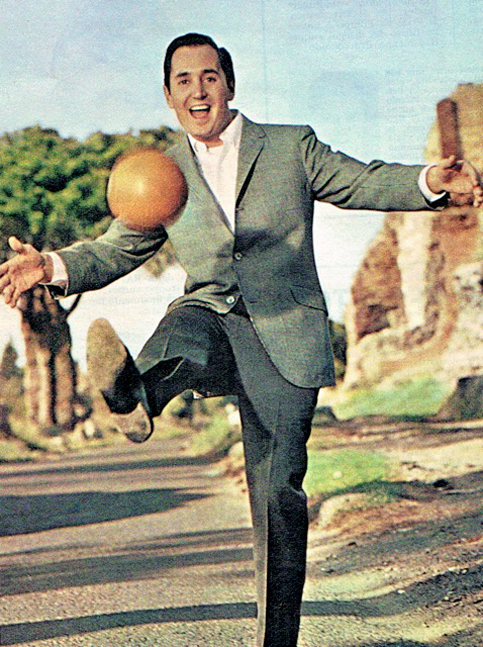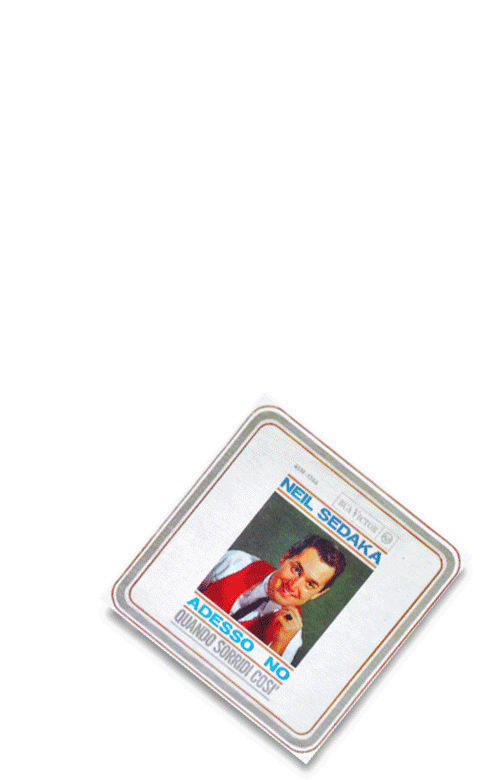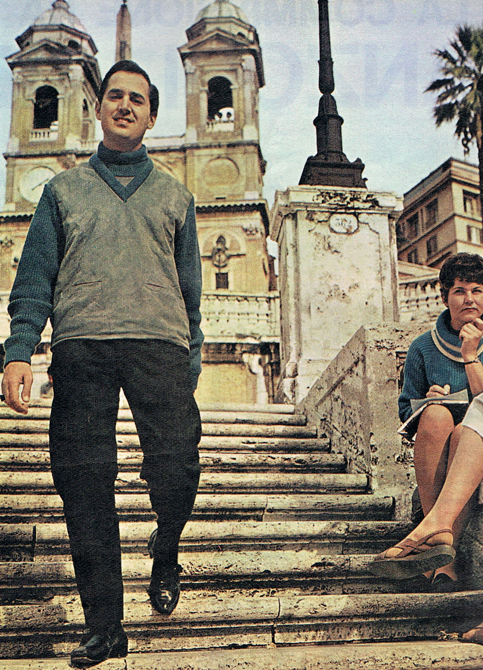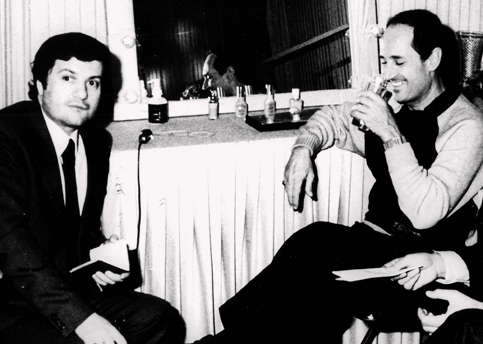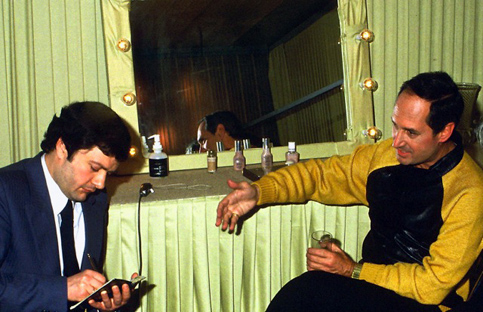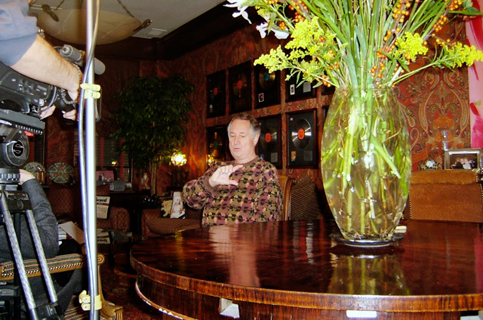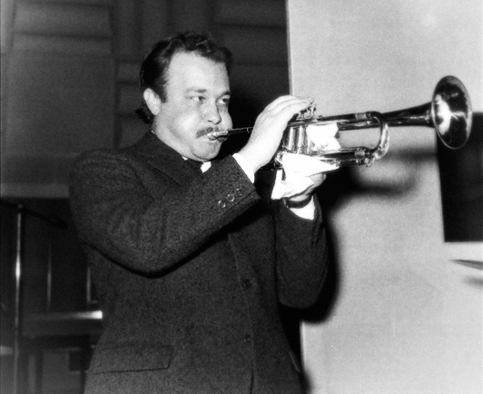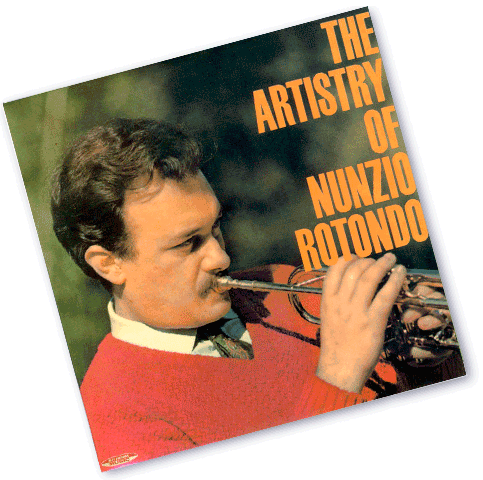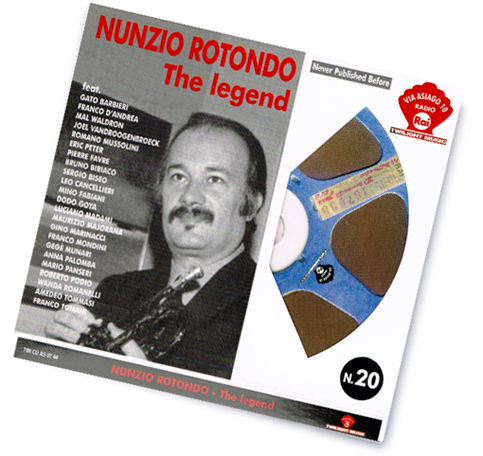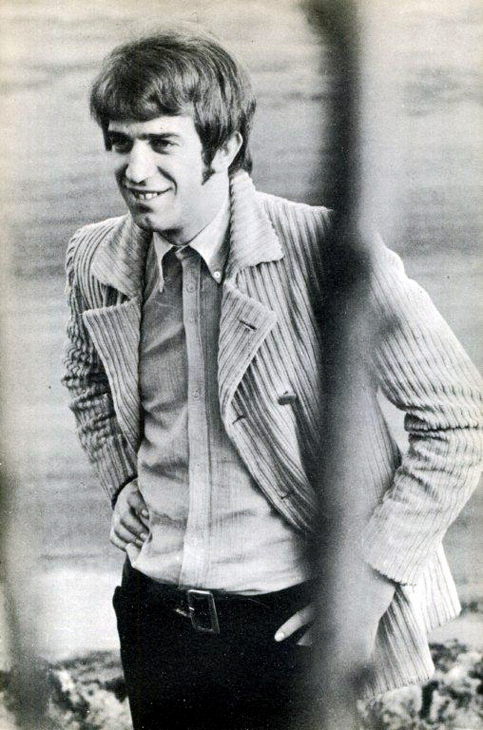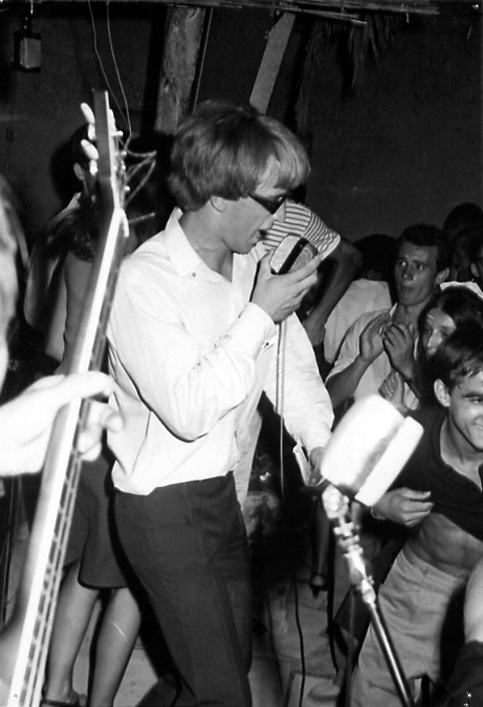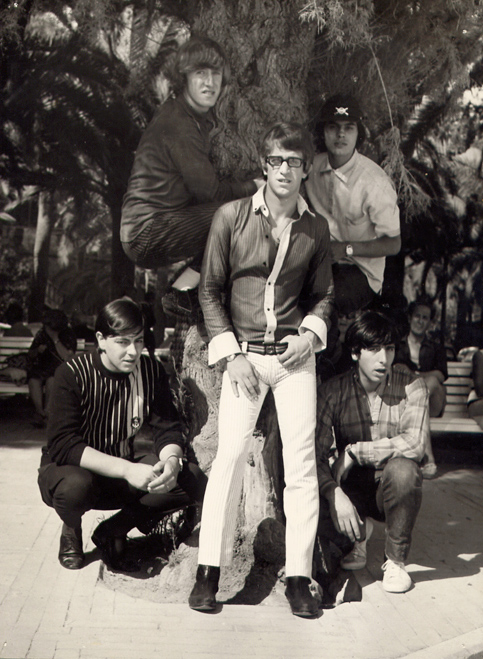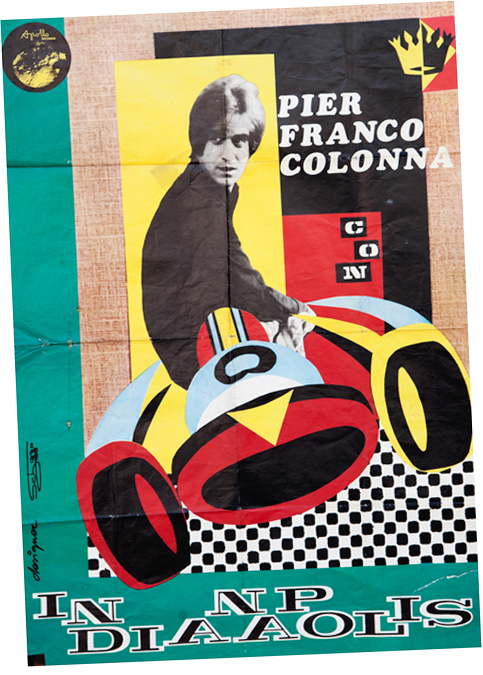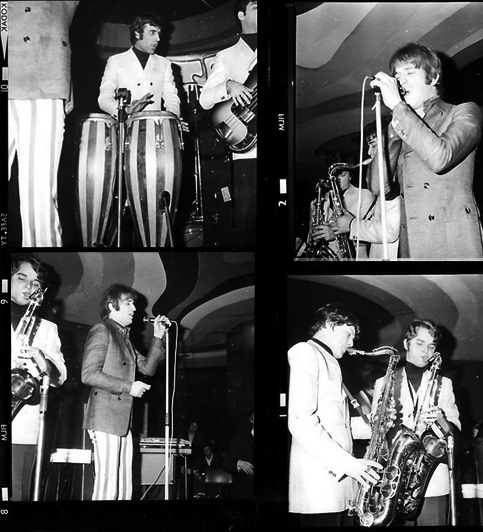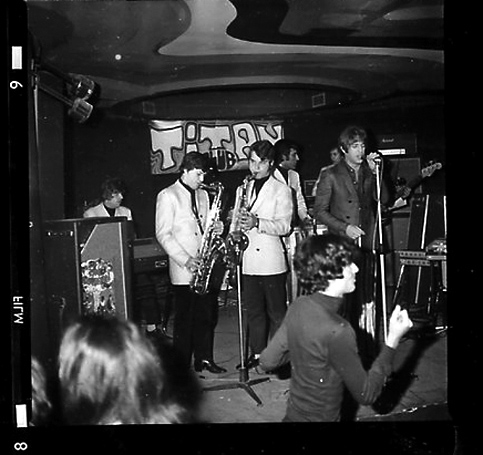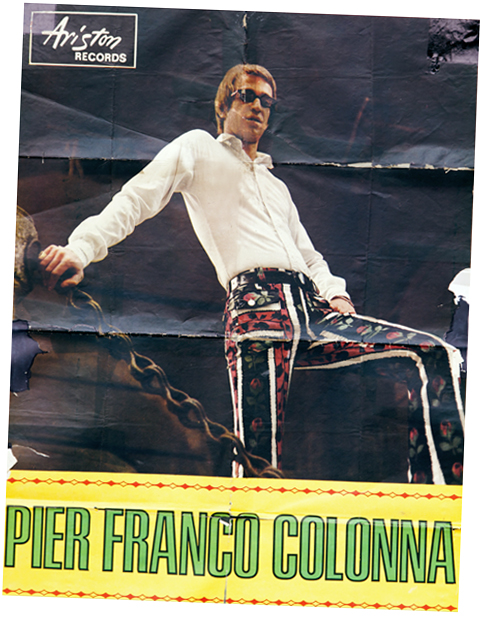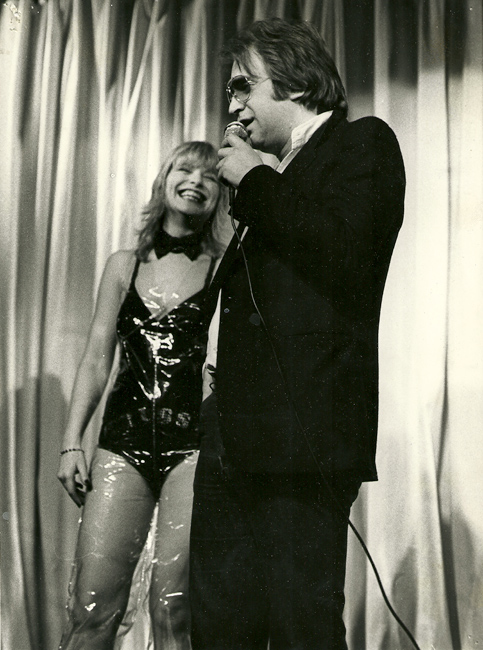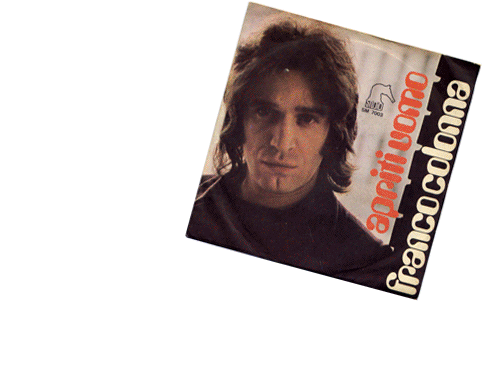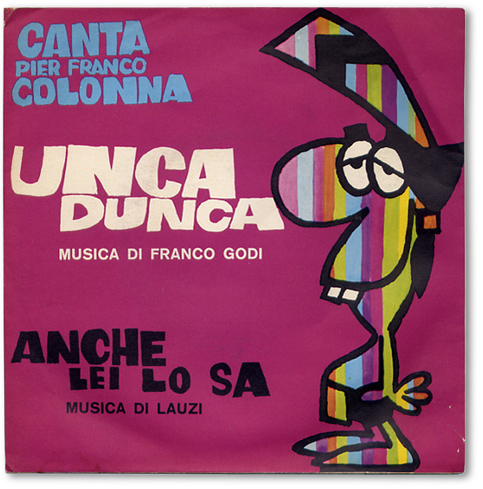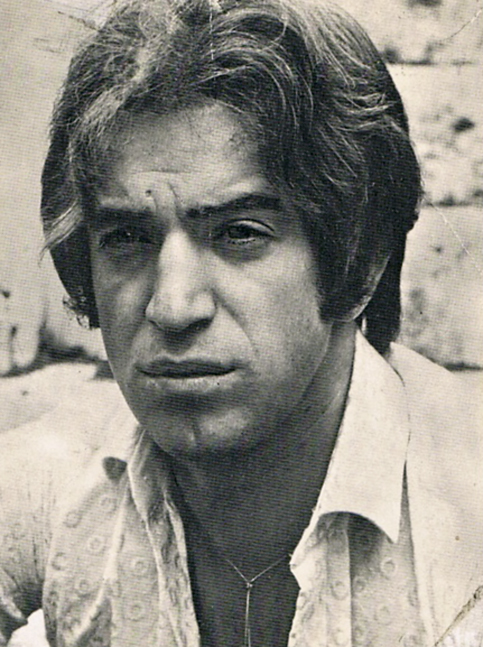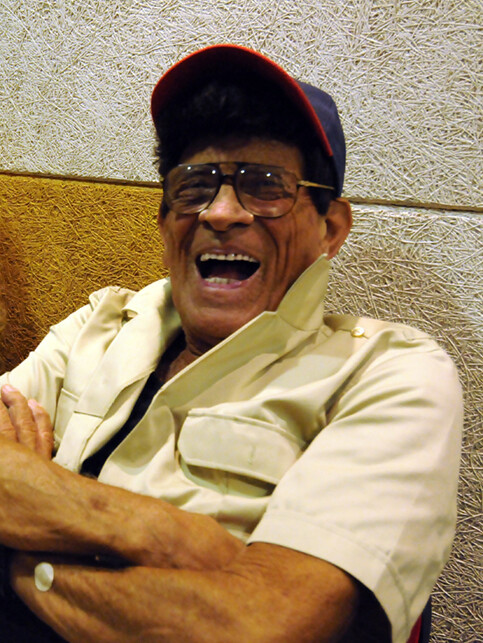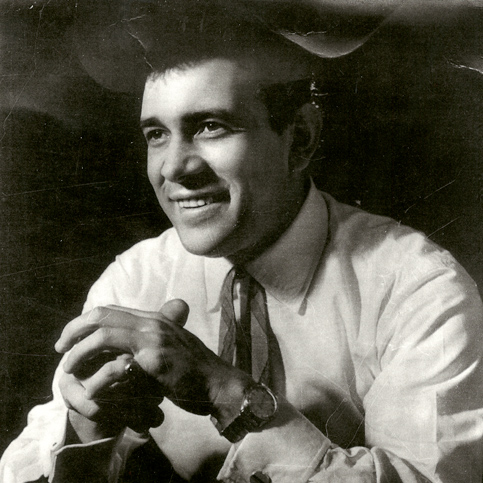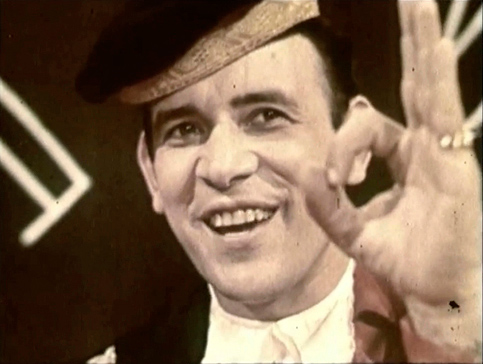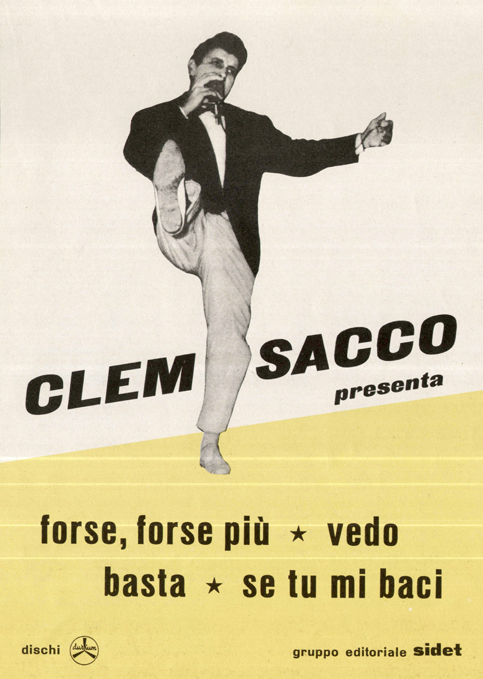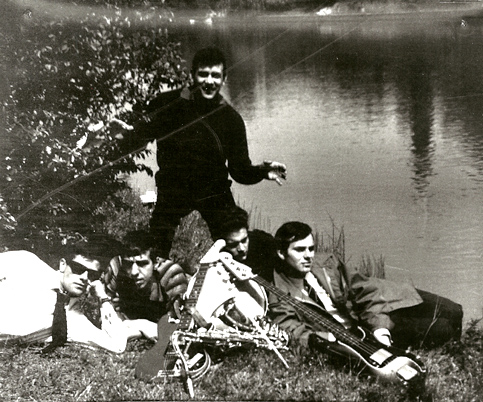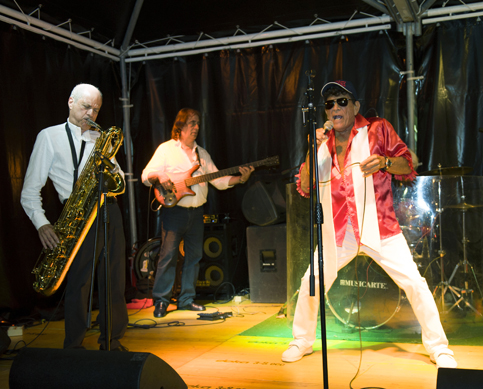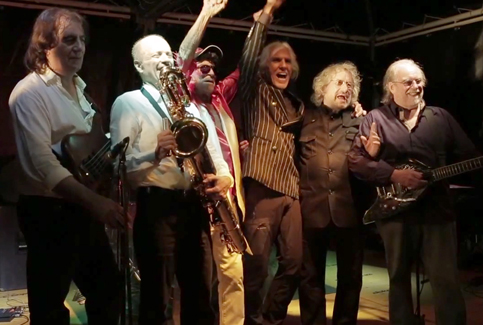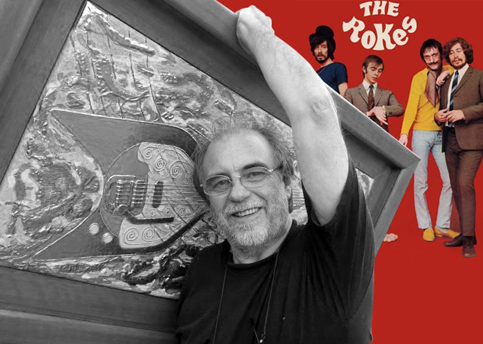L’uomo che non ride è un poeta felice
IL PIÙ RAFFINATO CAPOSTIPITE DELLA CANZONE D’AUTORE ITALIANA È SCOMPARSO IL 7 SETTEMBRE DEL 2005. ECCO LA SUA ULTIMA INTERVISTA IN CUI TRACCIA UN BILANCIO SERENO E APPASSIONATO DI OLTRE 50 ANNI DI CARRIERA: IL MAESTRO JAQUES BREL E GLI ALTRI MODELLI DELLA CHANSON FRANCESE; LA SQUADRA RICORDI CON IL CENTRAVANTI GINO PAOLI; LE NOZZE MAGICHE TRA MELODIA E TESTO DA TAJOLI A DE GREGORI; I PROFILI RETORICI E REALI DELLE MUSE ISPIRATRICI TERESA, MADDALENA E ANNAMARIA.
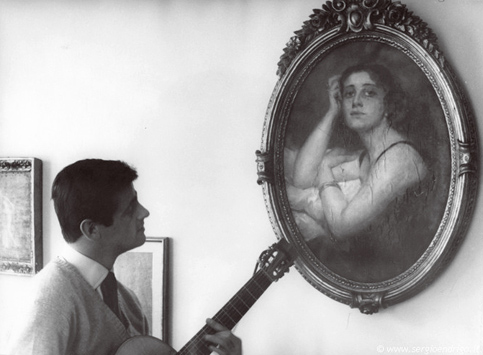
Al manifesto de L’Uomo che Ride di Victor Hugo, una mano anonima aggiungeva un “non”. E quell’Uomo che Non Ride era l’incipit della scenetta. Alighiero Noschese, il caposcuola inarrivabile di tutti i Max Giusti, Max Tortora, Maurizio Crozza, aveva fatto di Sergio Endrigo una delle macchiette più gettonate del suo repertorio.
Lo imitava rasentando la perfezione senza nemmeno ricorrere a trucchi speciali, sporgendo in avanti il mento come il don Vito Corleone di Brando, l’espressione mesta, la fronte corrugata e gli occhi socchiusi, circondato da ballerine abbigliate a lutto e singhiozzanti, lui vestito di nero sibilava un po’ le “esse” e parafrasava “Lontano dagli occhi” intonando: “…non fate le corna, non fatemi torto, jella non porto ma rider non so”. E Sergio Endrigo masticava amaro: non sopportava quell’imitazione ma neanche si azzardava ad intervenire per lo scrupolo di frapporre censure e limitazioni al lavoro di un altro artista. Poi la goccia fatidica sopra il livello di guardia.
“Nell’ennesima parodia televisiva – racconta Endrigo – la canzone presa di mira diventò “Ci vuole un fiore” e sempre circondato da ballerine in vedovanza, Noschese mi rappresentò cantando: “Per far la bara, ci vuole il morto”. Troppo! Con me in quel momento c’era Sergio Bernardini, il patron della Bussola in Versilia. Sapevo che qualche sera dopo avrebbe ospitato proprio Noschese. “Digli che se riprova a dipingermi come il protagonista della Patente di Pirandello appena lo incontro gli spacco la faccia!” E da quel giorno Alighiero… dimenticò di inserirmi nel suo repertorio…”
Paura della nomea di menagramo?
“Terrore. Per un artista equivale alla morte civile. Un mio zio compositore di sinfonie incantevoli era stato praticamente messo al bando per una diceria del genere, ovviamente alimentata da concorrenti di scarso talento ma di spietata determinazione. Ricordo una volta in uno studio di registrazione della RCA che qualcuno lo nominò e subito un fonico si esibì nel più volgare dei gesti di scongiuro, incassando una raffica di improperi da parte mia”
Mia Martini pagò una parcella terribile per gli effetti di quella maledizione…
“Uno stato di emarginazione totale: impresari, discografici, colleghi, molti sogghignavano partecipando a quel gioco circolare di calunnie dettagliate, altri si dimostravano realmente impauriti dal contatto anche soltanto visivo con quella povera ragazza marchiata come dispensatrice di calamità”
Lei cosa fece per aiutarla?
“Restavo fuori dal coro e insultavo i coristi quando mi capitavano a tiro. Cercavo di trasmetterle solidarietà, l’affetto per l’essere umano fragile, la stima per l’artista tangibile. La invitai a partecipare ad un mio progetto discografico: un album di canzoni venete in cui lei cantò due brani: Cecilia e Donna Lombarda. Al ritorno da uno dei miei periodici viaggi in Brasile le feci conoscere una canzone che sembrava scritta per la sua voce: Milho Verde. Le piacque, la incise: un’esecuzione soave e delicata come una farfalla rosa”
Sergio Endrigo “La Periferia” (Cinebox, 1962).
Le chiacchiere sulla sfortuna non hanno coinvolto Sergio Endrigo, forse per la sua tempestività nell’intervenire su Noschese o forse perché quell’ imitazione era così esilarante da palesare l’innocenza di contenuti e intenzioni. Ma l’immagine di artista e anche di uomo malinconico è sua compagna da sempre: per quei brani così intensi pur nella leggerezza della musica pop, per quelle interpretazioni così misurate nella compostezza scenica e melodica, per quei testi così garbatamente introspettivi pur nelle marcette per bambini sagaci. Cinquant’anni fa, al suo esordio, Sergio Endrigo per il pubblico di tutte le età era già un adulto.
“Quando nel 1968 vinsi il Festival di Sanremo con Canzone per te il settimanale Epoca mi dedicò la copertina. La didascalia recitava: Trionfa a Sanremo un vecchio signore. Avevo 35 anni. Ma anche alcuni colleghi hanno talvolta espresso giudizi curiosi sul mio aspetto. Ricordo una simpatica e bella cantante che mi disse: sembri un ingegnere più che uno di noi. E Adriano Celentano commentò a Sanremo nel 1970: sembri un cowboy tra i grattacieli ”
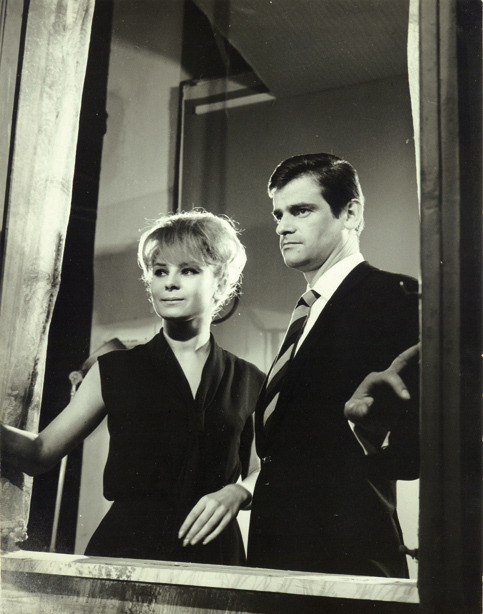
L’uomo Endrigo è effettivamente una persona seria, coerente, rigorosa e non di rado spigolosa. L’artista è quanto di meglio il nostro paese sia riuscito a produrre nell’ultimo mezzo secolo di canzoni d’autore. Un adulto – anche quando anagraficamente non lo era – che però ha sempre affascinato i giovani, un artista dal target transgenerazionale: Io che amo solo te nel 1963 fece sognare e innamorare eserciti di ragazzini e sbarbine, ma quel 45 giri conquistò anche i loro genitori e i genitori dei genitori, più di Oscar Carboni, più di Alberto Rabagliati.
“È vero, negli anni ’60 mi rivolgevo a tutto il pubblico, dai minori di 16 agli ultrasessantenni. Non c’era distinzione nella proposta musicale. E non mi riferisco soltanto alle mie proposte, ma anche a quelle di Paoli, di Gaber, di Meccia, di tutti gli altri cantautori , di compositori-cantanti come Fidenco e Vianello. Oggi l’industria fabbrica offerte per giovani a spettro ridotto, che producono steccati, che ritardano o arrestano la crescita culturale”
Meriti e colpe dei discografici, un tempo audaci e illuminati, oggi miopi e tremebondi…
“Luoghi comuni con tante verità e parecchie eccezioni. Ho incontrato anche a quell’epoca ostacoli: il direttore delle vendite della RCA, Pulvirenti, era contrario all’uscita di Io che amo solo te perché reputava l’introduzione orchestrale eccessivamente lunga e raffinata: troppi archi, poca ritmica. Ma io ho sempre detestato la batteria!”
Ostacoli comunque superati…
“Sì, i discografici di quegli anni erano abbastanza rispettosi della volontà dell’artista: tante proposte, molti suggerimenti, rarissime imposizioni. C’era dialogo continuo che spesso si trasformava in dibattito allargato ad altri colleghi. Alla Ricordi facevo ascoltare i miei pezzi a Luigi Tenco, a Giorgio Gaber e loro facevano altrettanto; c’erano Nanni Ricordi e il suo vice Franco Crepax che incoraggiavano il confronto”
Sergio Endrigo “Ora che sai” (Cinebox, 1964).
Però con l’RCA ci fu un litigio che sfociò nel divorzio…
“Volevano che incidessi la versione italiana di un brano di Udo Jurgens: Warum Nur Warum. Mi rifiutai, insistettero al limite della soperchieria, me ne andai”
La versione italiana di Warum Nur Warum fu incisa dallo stesso Jurgens con il titolo Peccato che sia finita così…quasi una dedica all’Endrigo fuggito. E quella cover riscosse tra l’altro un invidiabile successo…
“Riconosco che era una canzone piacevole, magari anche adatta al mio repertorio. Ma non potevo e non dovevo accettare l’intimazione dell’azienda per non creare un precedente rischioso. Sono un cantautore ed era giusto che incidessi le mie canzoni. Già un anno prima avevo commesso quello che considero l’unico errore della mia carriera, ossia registrare Se le cose stanno così, un brano composto dal maestro Bacalov con le parole di Alessandro Fersen, regista teatrale di chiara fama. Il disco vendette oltre un milione di copie. Una sera ebbi occasione di conoscere Fersen: lui era circondato da giornalisti e si confessò quasi imbarazzato per aver confezionato un prodotto di così modesta portata culturale. Un punto di vista che mi ferì a morte. C’era poi un’altra ragione per rifiutare la canzone di Jurgens: Ennio Melis, il direttore dell’RCA, manifestava più attenzione per i cantautori giovani, Francesco De Gregori e Antonello Venditti in testa. Era percettibile insomma l’orientamento a riverniciare il parco artisti: il mio fu un contropiede”
Dettato anche da un pizzico di gelosia?
“Per De Gregori? L’ho sempre e soltanto ammirato: è il cantautore italiano che preferisco”
Perché?
“Perché si applica con successo nell’infondere dignità alle canzoni attraverso testi di poesia brillante. Dal suo lavoro sono nate frasi come: “Capelli bianchi che si fermarono a una fontana a pettinare gli anni”. E riesce a coniugare poesia e melodia con efficacia straordinaria. È un matrimonio difficile, ma quando si consuma affiorano pagine indelebili. Mi piace ricordare Fontana e Migliacci con la loro bellissima: “Paese mio che stai sulla collina, disteso come un vecchio addormentato”. Non basta un testo fascinoso, il più geniale dei compositori potrebbe mettere in musica l’Inferno di Dante con esiti grotteschi. Se un testo incontra la giusta melodia il risultato è garantito a prescindere da ogni significato. Ricordo un brano di quando avevo 13 anni. Lo cantava Luciano Tajoli: “Il mare non ama i bastimenti alle catene, se il mare a nessun altro vuole bene, perché deve volerne a me?”. Suonava alla perfezione, nonostante l’evanescenza concettuale. Potrei fare altri esempi come “La pioggia non bagna il nostro amore quando il cielo è blu” oppure “Il mondo non si è fermato mai un momento, la notte insegue sempre il giorno ed il giorno verrà” frasi che stese su pagina hanno poco senso ma che sposate alle rispettive melodie acquisiscono un’energia portentosa”
Sta dicendo che il valore intrinseco dei due componenti – musica e testo – è trascurabile ai sensi del risultato della combinazione?
“Intendo dire che la canzone non deve necessariamente essere impregnata di poesia. Capolavori come Pippo non lo sa, Marameo perché sei morto o Il pinguino innamorato non erano stati corretti in bozza da Carducci”
Un’equidistanza sorprendente per essere il cantautore italiano più apparentato con la poesia, che ha trasformato in canzoni i versi di Rafael Alberti, di Gianni Rodari, di Pier Paolo Pasolini, che ha inciso album assieme a Giuseppe Ungaretti e a Vinicius De Moraes. A ricordargli materialmente il poeta brasiliano de “La vita, amico, è l’arte dell’incontro” c’è sempre Paco, il variopinto pappagallo che in compagnia di Vinicius acquistò a Rio oltre trentacinque anni fa. Paco spizzica carote nella sua imponente gabbia accanto alla finestra: è il più in forma di tutti in questa calda e umida giornata romana di fine agosto. Endrigo lamenta una serie di acciacchi, lotta da qualche tempo contro i mulini a vento che gli insidiano la salute. Lo scorso 15 giugno ha compiuto 72 anni, è vedovo da 11, vive con la figlia Claudia nella sua personale Arca di Noè che ospita oltre a Paco cani e micetti. Se il fisico è provato, lo spirito tiene botta: “Nessun rimpianto. Ho realizzato tutti i miei sogni, centrato i bersagli. Neanche troppo rammarico per i miei ultimi quattro album, strangolati da promozione inesperta e distribuzione inadeguata. Dico la verità: all’inizio non credevo che la mia carriera sarebbe durata tanto a lungo. Al mio esordio discografico, con “Bolle di sapone”, passavo davanti alle vetrine della Ricordi a Milano, dove il disco era esposto e mi chiedevo: ma perché mai qualcuno dovrebbe acquistare proprio il mio 45 giri?”
r]
Sergio Endrigo “La dolce estate” (Cinebox, 1964).
Sergio Endrigo è nato a Pola, capoluogo dell’Istria prima di passare nel 1947 sotto l’amministrazione jugoslava. Infanzia e adolescenza in povertà, dopo la prematura morte del padre, scalpellino del marmo, ma anche pittore e tenore autodidatta. Prima qualche mestiere improvvisato, poi l’avventura della musica: la prima chitarra, ingaggi come cantante e contrabbassista nelle orchestrine dei night-club, in seguito voce solista di un complesso di rango, quello del sassofonista Riccardo Rauchi. Nel 1960 l’ingresso nell’ingegnosa area Ricordi, in squadra con Paoli, Tenco, Gaber, Jannacci, Bindi: la Juventus della canzone d’autore. Chi era il centravanti?
“Gino Paoli. Partì subito con canzoni bellissime, molte rimaste sconosciute. Il più apprezzato degli autori: ottimo per Mina, eccellente per Ornella Vanoni. Ma lui no, non volevano farlo cantare. Quel tono di voce così fuorischema, disallineato, poteva rivelarsi noioso, persino irritante. Meglio non tentare. Anche la mia voce risultava non conforme alla tipologia convenzionale: feci un’audizione alla Rai per cantare nell’Orchestra di Pippo Barzizza e venni scartato. Voce e stile eccessivamente “americanizzati” fu la motivazione del verdetto di condanna pronunciato dalla Commissione Ascolti. Poi, per Gino e per me, sappiamo come andò”
Voi padri della canzone d’autore italiana a quali modelli vi ispiravate?
“Ci piaceva qualche fuoriclasse americano dello swing, tipo Nat King Cole. Tenco, che suonava anche il sax , adorava Paul Desmond. Bruno Lauzi era attratto dalle magie del musical alla Gene Kelly, Bindi coglieva i frutti della sua formazione classica. Ma in prima battuta eravamo tutti affascinati dagli chansonnier francesi: dalla vecchia guardia di Charles Trénet ai più giovani Gilbert Bécaud, Charles Aznavour e soprattutto Georges Brassens. Io poi vivevo nell’incanto artistico di Jacques Brel, quei testi, quelle storie, quelle interpretazioni. Lo conobbi più tardi, a Roma nel 1964: era cordiale, sereno, gli confessai che senza la sua influenza non avrei mai potuto scrivere Viva Maddalena”
Influenza a parte, qual è il metodo di scrittura di Sergio Endrigo?
“Scrivo alla chitarra. Parole e musica assieme. Il testo è fondamentale per stimolare la mia creatività. Se compongo soltanto la musica poi le parole non mi vengono più o mi fa difetto l’abilità per adattarle alla melodia. Accadde una volta a Napoli: scrissi di getto una traccia musicale che mi sembrava deliziosa. Non persi tempo a cercare le parole, telefonai a Sergio Bardotti che confezionò rapidamente un testo altrettanto ammaliante: Te lo leggo negli occhi. Divenne un successo per Dino”
Perché non la cantò lei e comunque perché non l’ha mai incisa anche successivamente a Dino?
“Evidentemente in quel periodo avevo già il mio progetto discografico. La versione di Dino era perfetta, cosa avrei potuto aggiungere io a quel brano? Sono contento che l’abbia inciso recentemente Franco Battiato. La sua esecuzione è un omaggio importante, la mia sarebbe stata superflua”
L’ispirazione di un testo è facilitata da un innamoramento? C’è stata sempre una Teresa, una Maddalena, un’Annamaria propellente della composizione?
“Nel mio caso soltanto un’Annamaria. Si chiamava così un’impiegata dell’RCA, musa ispiratrice anche per Io che amo solo te. All’inizio della mia carriera, quando cantavo nei night-club, l’innamoramento era sistematico: le storie duravano circa 15 giorni, il tempo del contratto, lei era quasi sempre una frequentatrice abituale del locale, una spogliarellista, un’entreneuse, una guardarobiera. Amate molte, capita nessuna”
Abbiamo già parlato di poesia e di verosimiglianza dei testi. Analizziamo le donne delle sue canzoni. Maddalena che regala notti bianche è la compagna ideale per un uomo?
“È la gioventù che regala notti bianche. Con Maddalena. Si comincia sempre con Maddalena, con l’attrazione sessuale. Non credo nella verginità, renderei obbligatorio il periodo di convivenza prima del matrimonio. Tantomeno credo nella donna per amico”
Ingiungeva a Teresa di raccontare la verità sulle sue esperienze pregresse. Senza concederle il beneficio del dubbio o il velo di una pudica omissione…
“In amore ho stabilito il divieto di esibirsi in menzogne”
Il protagonista di Via Broletto 34 era un uomo geloso o un paranoico?
“Un uomo geloso”
Ma c’era bisogno di ucciderla?
“Convivevano. E lei lo tradiva spudoratamente. Mi ispirai ad un delittaccio di cronaca, conciato alla maniera di Brel”
Brel continua ad influenzare le nuove generazioni?
“Avverto le tracce di Brel soltanto nei lavori dei grandi. I Quattro amici al bar di Paoli mi ricordano i tre giovani vitelloni che stornellavano gli sfottò la sera davanti al Circolo dei Notai: “i borghesi sono dei porconi più diventan vecchi meno sono buoni” e che da adulti si ritrovano a loro volta notai, insomma Les Bourgeois. Anche la suggestiva I Vecchi di Claudio Baglioni mi fa pensare a Brel e ai suoi commoventi Les Vieux. Alcuni autori delle recenti generazioni si mostrano attenti nella ricerca dell’opera dei Maestri: è fondamentale conoscere la storia se si vuol scrivere qualcosa che rimane; gli altri creano testi che diventano cenere nell’arco di un mese. Testi standardizzati e voci massificate, dal timbro esatto e saldamente intonate ma senza personalità, anonime. Natalino Otto e Achille Togliani , impeccabili per timbro e per intonazione, li riconoscevi fra un milione”
Il modello di molti giovani cantautori è proprio Sergio Endrigo.
“Me ne sono accorto ed è quanto di più gratificante possa accadere ad un anziano signore – oggi Epoca potrebbe scriverlo con persuasione anagrafica – che per tutta la vita ha sperato di lasciare un’impronta del suo passaggio. I giovani mi coccolano con manifestazioni di stima, allestiscono concerti che esplorano il mio repertorio, incidono i miei brani, compilano album in mio onore: sono artisti già affermati come Vinicio Capossela, Sergio Cammariere, Tosca, Cristiano De Andrè o in crescita inarrestabile come La Crus, il Parto delle Nuvole Pesanti o Simone Cristicchi che mi ha inoltre invitato a una partecipazione in voce per il suo ultimo lavoro. Ecco, quando ti senti di aver raggiunto il termine della strada e ti ritrovi circondato da una compagnia così vivace e grata, perdoni alla vita tutti gli oltraggi, anche il più invalidante, quello del deficit uditivo che a metà degli anni ’80 mi costrinse a ritirarmi dalle scene. Ero al festival di Sanremo, nel 1986: alle prove la mia esibizione era apparsa più che decorosa, poi in serata davanti al pubblico e alle telecamere dell’eurovisione, all’improvviso, il male. Non sentivo più l’orchestra e leggevo il disagio negli occhi del direttore mentre la mortificazione mi stringeva alla gola. Non sono mai guarito del tutto, ma ci sono state fasi sensibili di miglioramento, durante le quali sono tornato ad esibirmi e ad incidere.
Insomma il bilancio è in netto attivo, sono riconoscente verso il mio pubblico e i miei simili in generale. Oggi mi piacerebbe dire al povero Noschese che l’Uomo che Non Ride è comunque un uomo felice.
Roma, agosto 2005

